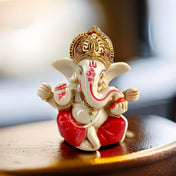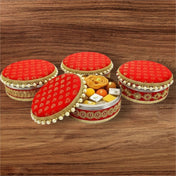Introduction to Annaprashana
The annaprashana ceremony is a cherished and The significance of annaprashana is highlighted through the rituals involved in this sacred ceremony. ritual in Hindu culture, celebrated as a rite of passage that marks a significant milestone in a baby’s life. Known as the first feeding of solid food, this ceremony is often conducted around the age of six months, symbolizing the transition from mother’s milk to solid food. Rooted deeply in Vedic traditions and categorized as one of the sacred food and a sacred practices in Nepal and India. 16 samskaras Annaprashana, a samskara (Hindu rites of passage), reflects not just nourishment but cultural and spiritual growth, emphasizing the symbolism as a life-sustaining food.
As an important milestone in a child’s early development, this ritual embodies the parents’ hopes and prayers for their little one’s health, prosperity, and overall well-being. In this blog, we’ll delve into the finer details of the annaprashana ceremony, its processes, regional variations, and its significance in Hinduism.
What is Annaprashana?
Etymology and Meaning
The term annaprashana means “the eating of food” in Sanskrit. It is derived from two words: “anna,” meaning grain or food, and “prashana,” meaning consumption or feeding. This sacred ceremony is also referred to as the rice ceremony in various regions, highlighting the introduction of cooked rice or rice-based dishes into the child’s diet. The feeding of solid food The ceremony marking this transition symbolizes a significant shift in the infant’s life, marking the first time they are introduced to life-sustaining food. food other than milk.
Cultural Significance of Annaprashan
In Hindu tradition, annaprashana is far more than a simple dietary change. It is a rite of passage that emphasizes the importance of nourishment, growth, and the child’s integration into the community. During this ceremony, prayers are offered for the baby’s health, cognitive development, and the ability to process their first solid meal—all crucial aspects of early childhood development. This transformative ritual underscores the notion of food as a life-sustaining and sacred gift in Hindu culture.
Significance of Annaprashan in Hinduism
Spiritual and Symbolic Importance
The annaprashana ceremony holds immense spiritual weight in Hinduism. Categorized as one of the key samskaras (rites of passage), the ritual signifies a momentous occasion in a child’s journey through the stages of life. It is an act of initiation, introducing the baby to the spiritual and cultural essence of food as a life-sustaining and sacred element.
In ancient Hindu texts like the Smriti, the ritual is described as an opportunity to pray for the child’s digestive power, clear speech, and cognitive growth. Food in the form of rice or kheer represents the symbolism of nourishment and sustenance, marking the transition from breast milk or mother’s milk to the broader spectrum of flavors and textures of solid food.
Role Within Hindu Culture and Community
The annaprashana ceremony is often accompanied by celebrations involving extended family, friends, and even the broader community. It is a moment to introduce the child not only to solid food but also to the religious and cultural legacy of their family. This ceremony fosters a sense of togetherness as loved ones gather together to celebrate an occasion steeped in tradition and joy.
Hindu : Preparations and Ceremony Details
Selecting an Auspicious Date
The ritual is performed when the child is around six months old, often between the age of six months and one year. According to Hindu customs, the auspicious date is determined by consulting a priest, who chooses the time based on the child’s birth chart and lunar calendar. Typically, boys have their feeding ceremony in even months, while girls partake in odd months. The timing is crucial to ensure the ceremony is held under auspicious conditions.
Ceremony Process
On the day of the ritual, the parents prepare with care and devotion. The baby is bathed and dressed in traditional attire, often made of silk or other fine fabrics. The child is placed on a banana leaf or other ceremonial seating arrangement, and a priest performs a puja (prayer ritual).
Once the prayers and blessings are completed, the parent or priest uses a gold ring dipped in sweetened rice or kheer to feed the child. This symbolizes the child’s first intake of food, transitioning from milk to solid food. Afterward, the ceremony is followed by a feast where guests are served a variety of food items.
Regional Variations of Annaprashana
Examples from India and Beyond
Annaprashana is celebrated across regions with slight variations in name and practice. For instance, it is called mukhēbhāt in West Bengal, cōṟūṇŭ in Kerala, and bhāt khulai in Himachal Pradesh. In Nepal, it is known as pasni. While the core values remain, the specific rituals, dishes, and symbolic acts may differ based on local customs, yet they all celebrate the sacred food in the form of solid food feeding.
Solid Food Served During Annaprashana
Primary Foods
The central dish of the annaprashana ceremony is traditionally kheer, a sweet rice pudding. Other variations include ghee-rice or dal-rice, meeting the requirement of being both soft and digestible for the child’s first feeding of a child.
Safety Considerations
It’s essential to ensure that the food given to the baby aligns with pediatric dietary guidelines. In many cases, parents will consult a doctor to ensure suitable quality and quantity of food offerings.
Conclusion
The annaprashana ceremony represents a beloved rite of passage in Hinduism, marking a child’s important milestone of transitioning to solid food. Deeply ingrained in Hindu culture, this ritual is a celebration of nourishment, cultural identity, and community.
Whether you’re exploring the cultural intricacies of Hinduism or looking to introduce this tradition to your family, the annaprashana ceremony remains a beautiful testament to the interconnectedness of life, sustenance, and spirituality.




















